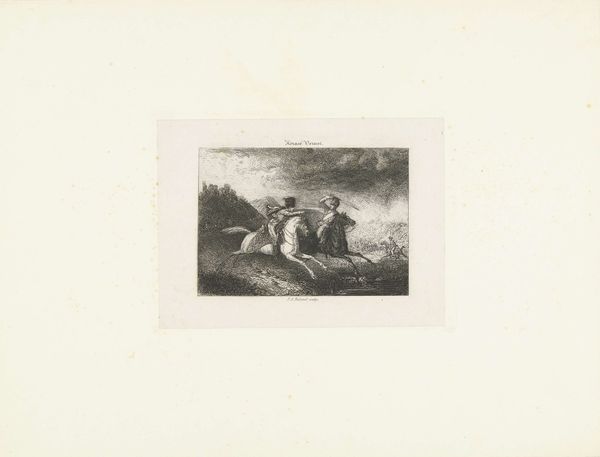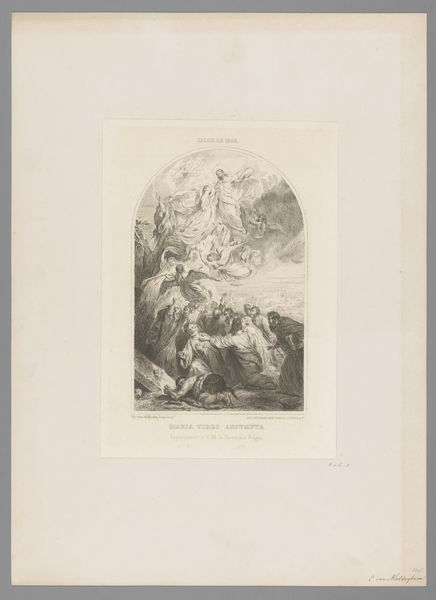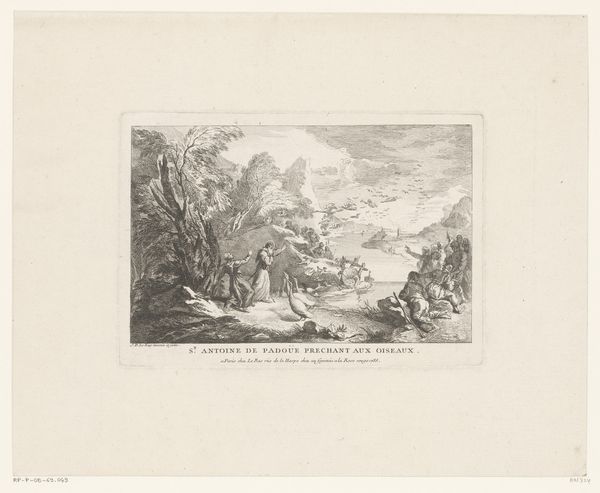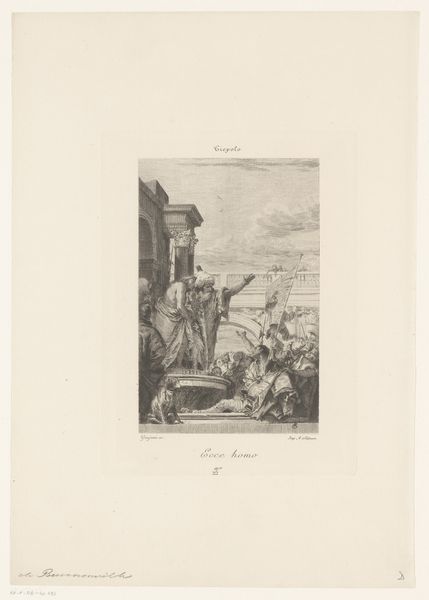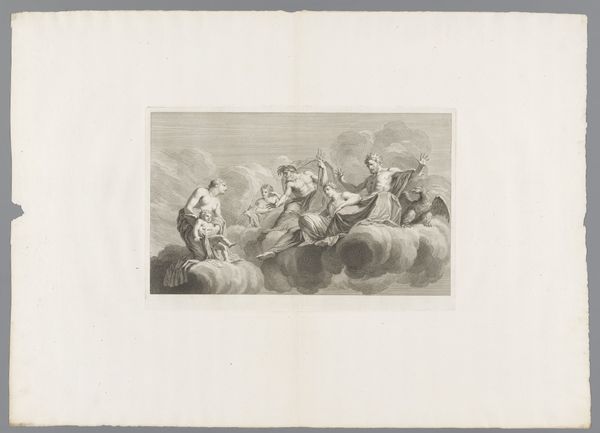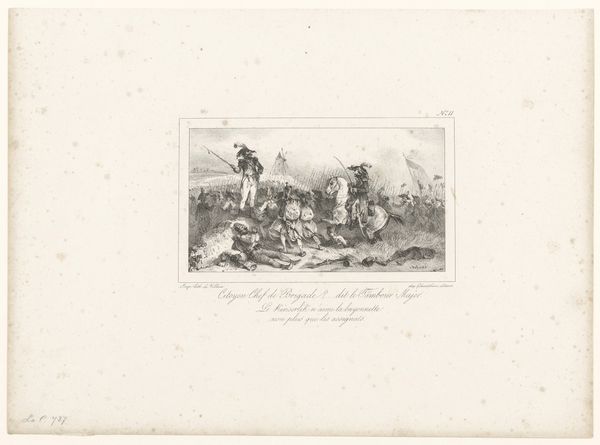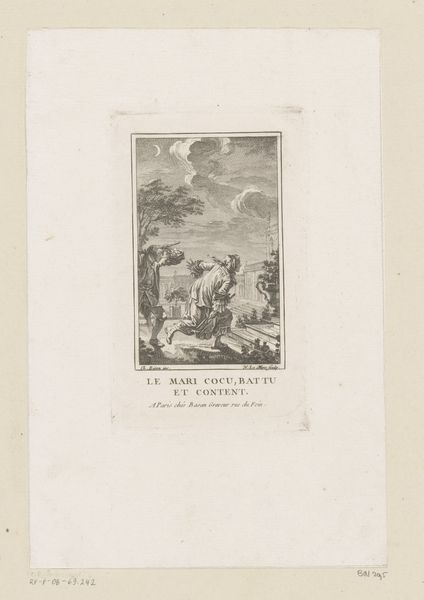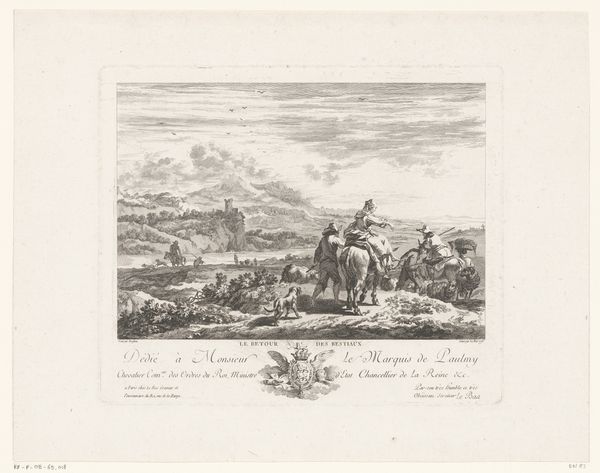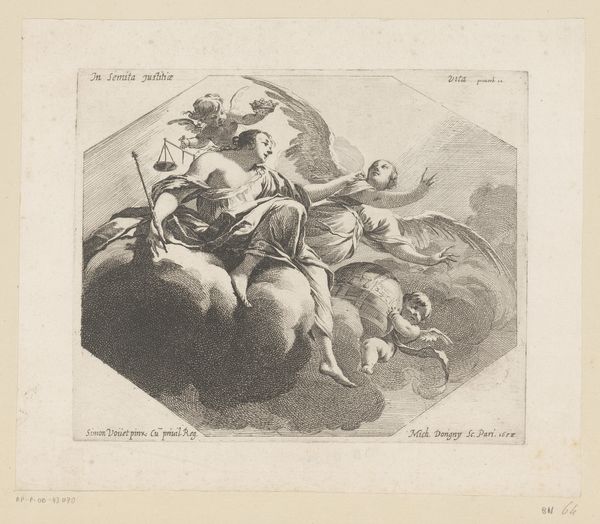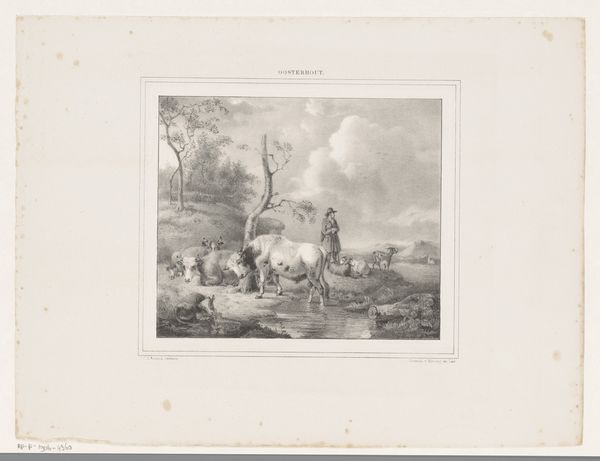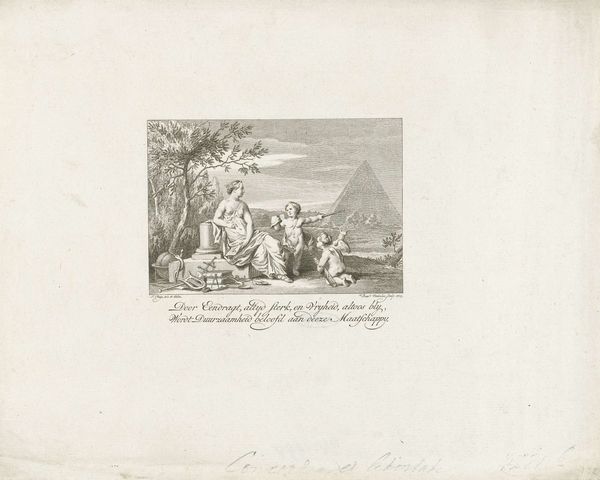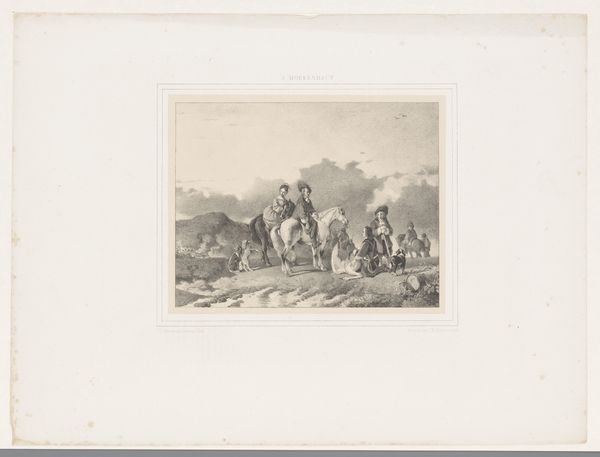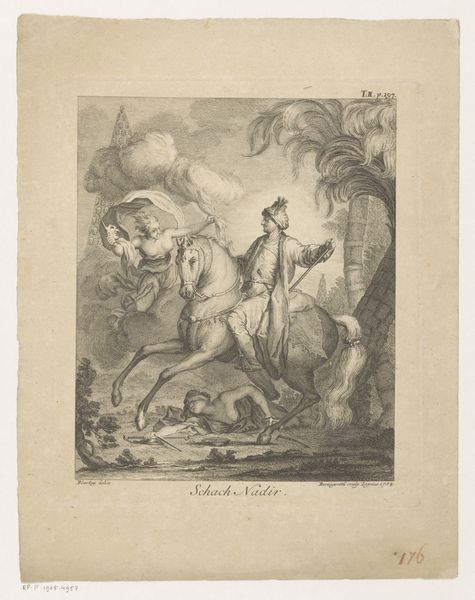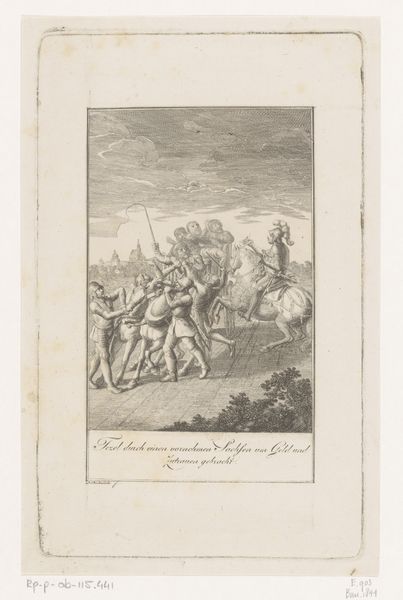
print, etching, engraving
#
neoclacissism
#
narrative-art
# print
#
etching
#
figuration
#
history-painting
#
engraving
Dimensions: height 130 mm, width 345 mm
Copyright: Rijks Museum: Open Domain
Editor: Here we have "Drie voorstellingen uit Blumauers Aeneide," or "Three scenes from Blumauer's Aeneid," a 1789 print by Daniel Nikolaus Chodowiecki, residing here at the Rijksmuseum. The three panels are quite small, and even though the scenes depicted are distinct, I can’t help but read them as a unified composition due to their adjacency and visual language. How do you interpret this work? Curator: It’s astute to observe the unity in the triptych’s composition, despite its disparate scenes. The work’s power, formally, resides in its commitment to line. Note the artist's meticulous use of hatching and cross-hatching to create tonal variation and volume. See how Chodowiecki employs a restricted tonal palette – predominantly grayscale – across the three scenes. How does the restricted palette unify these narrative moments? Editor: It’s almost like it turns all three of them into a study, like a preparatory drawing rather than three discrete, fully rendered prints. The uniform gray makes me consider the forms rather than getting lost in details of color or subject matter. Curator: Precisely. Further, observe how each panel is composed using similar strategies for distributing light and shadow, fostering visual consistency. What effect does that have on your experience of the work? Editor: It guides my eye, definitely, creating rhythm across the three scenes. Even the placement of the figures creates an underlying visual link! Thank you. Curator: Indeed. A study of this print reveals a sophisticated understanding of formal unity achieved through considered compositional choices. These linear and tonal relationships give this work its specific visual impact.
Comments
No comments
Be the first to comment and join the conversation on the ultimate creative platform.
